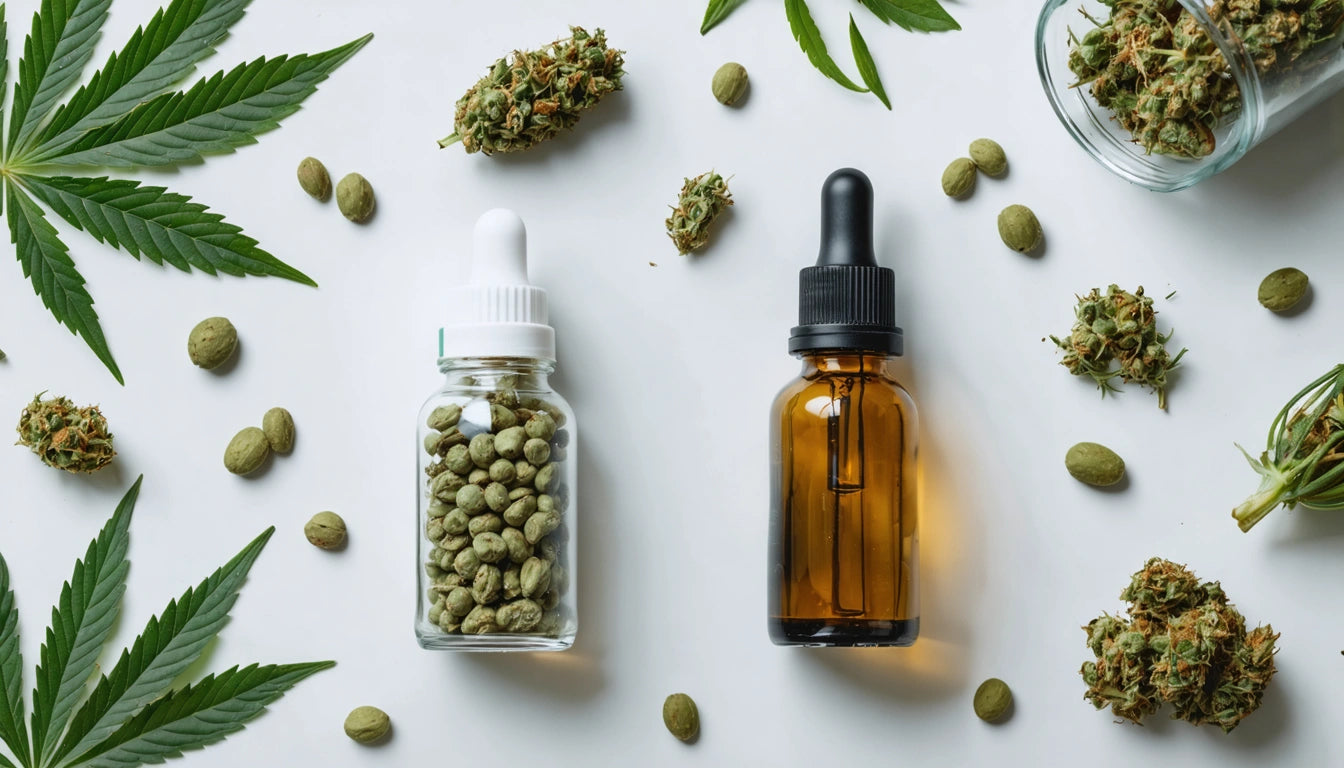Table of Contents
- Market Overview: Edible Packaging Landscape
- Custom Printed Pouches: Flexibility and Brand Expression
- Rigid Containers: Durability and Protection
- Compliance Considerations for Both Options
- Sustainability Factors in Packaging Selection
- Cost Analysis and ROI Considerations
- Strategic Selection: Making the Right Choice for Your Product
When launching cannabis edibles, packaging selection stands among the most critical decisions manufacturers face. The choice between custom printed pouches and rigid containers impacts everything from compliance and preservation to consumer appeal and brand positioning. This comprehensive comparison examines the advantages and limitations of each option to help producers make informed decisions.
Market Overview: Edible Packaging Landscape
The cannabis edibles market continues to expand rapidly, with packaging requirements evolving alongside regulatory frameworks. According to industry reports, edibles represent approximately 15% of cannabis sales in mature markets, making packaging optimization essential for competitive advantage.
Both custom printed pouches and rigid containers dominate the top packaging options for gummies, chocolates, and beverages, but each serves different product needs and market positioning strategies.
Custom Printed Pouches: Flexibility and Brand Expression
Advantages of Pouches
Custom printed pouches offer exceptional branding opportunities through full-surface printing capabilities. These flexible packaging solutions provide:
- Lower shipping and storage costs due to compact, lightweight design
- Excellent customization options for different product sizes
- Lower per-unit costs at scale compared to rigid alternatives
- Better shelf efficiency in retail environments
Pouches particularly excel for products like gummies and chocolates that don't require rigid structure protection. Many brands leverage pouches for their shelf appeal while maintaining discretion through creative design approaches.
Limitations of Pouches
Despite their advantages, pouches present several challenges:
- Potentially less tamper-evident without additional features
- May offer reduced protection against crushing
- Sometimes perceived as less premium by consumers
- Can present child-resistance certification challenges
Manufacturers using pouches must ensure precise labeling requirements for cannabis edibles are met, which can be more challenging on flexible surfaces.
Rigid Containers: Durability and Protection
Advantages of Rigid Containers
Rigid containers, including plastic jars, tins, and tubes, provide superior protection and premium positioning:
- Enhanced product protection against physical damage
- Easier implementation of child-resistant mechanisms
- Better moisture and oxygen barriers for extended shelf life
- Premium consumer perception and potential for reuse
For precise dosing, many manufacturers rely on rigid containers combined with accurate weighing equipment during production to ensure consistent product quality and regulatory compliance.
Limitations of Rigid Containers
Rigid options come with notable drawbacks:
- Higher production, shipping, and storage costs
- Limited printable surface area compared to pouches
- Less flexibility for product line extensions
- Greater environmental footprint unless made from sustainable materials
These limitations make rigid containers potentially challenging for startups or brands with budget constraints.
Compliance Considerations for Both Options
Both packaging types must address stringent regulatory requirements:
Child-resistance certification remains mandatory across most markets, with both options offering compliant solutions. Pouches typically use special zippers or closure mechanisms, while rigid containers employ push-and-turn or squeeze-and-turn caps. Brands should review how to create child-resistant packaging for edibles before finalizing designs.
Opacity requirements, critical for preventing appeal to children, can be addressed in both formats. Rigid containers can use colored materials, while pouches typically incorporate opaque films or coatings as detailed in this guide on opaque packaging.
Sustainability Factors in Packaging Selection
Environmental considerations increasingly influence packaging decisions:
Pouches generally use less material by weight but often combine multiple materials that can be difficult to recycle. Some newer mono-material pouches address this limitation but may cost more.
Rigid containers, while material-intensive, can be made from recyclable plastics, glass, or metal. Brands focused on sustainability should explore sustainable packaging options for cannabis edibles that align with their values and consumer expectations.
The biodegradable vs. recyclable comparison provides further guidance for brands prioritizing environmental responsibility.
Cost Analysis and ROI Considerations
Financial factors often drive packaging decisions:
- Initial Investment: Pouches typically require lower minimum orders and setup costs
- Unit Economics: Rigid containers cost 30-60% more per unit on average
- Shipping Impact: Pouches significantly reduce logistics costs
- Perceived Value: Rigid options may command premium pricing
Brands must consider both immediate costs and long-term value when selecting packaging. Premium products often justify rigid containers through higher margins, while mass-market items benefit from the cost efficiency of pouches.
Strategic Selection: Making the Right Choice for Your Product
The optimal packaging choice depends on specific product requirements and market positioning:
For premium, high-potency edibles, rigid containers often justify their cost through enhanced protection and perceived value. Conversely, mainstream products with competitive pricing typically benefit from pouch economics.
Products requiring precise dosage information may find rigid containers easier for designing packaging for microdosed vs. high-potency edibles.
Ultimately, successful brands often develop a portfolio approach, using both packaging types strategically across their product lines to balance protection, compliance, branding, and cost considerations.











Leave a comment
All comments are moderated before being published.
This site is protected by hCaptcha and the hCaptcha Privacy Policy and Terms of Service apply.